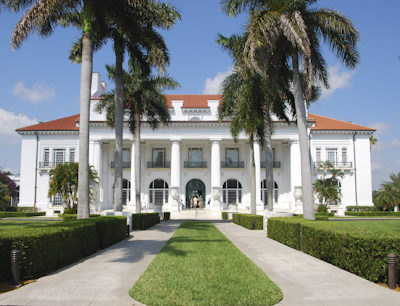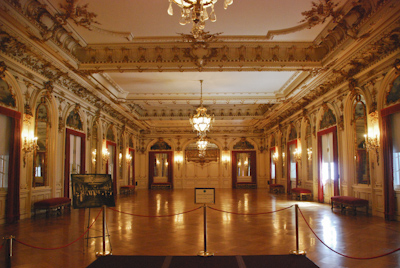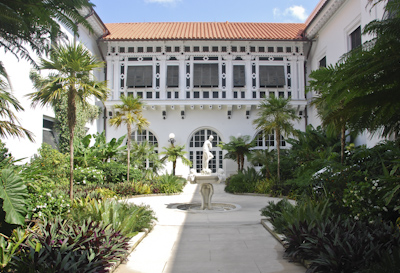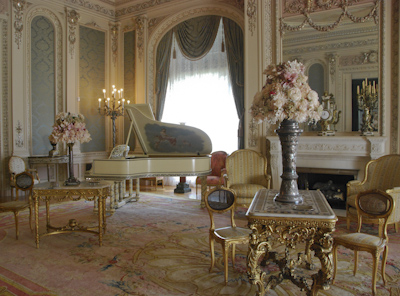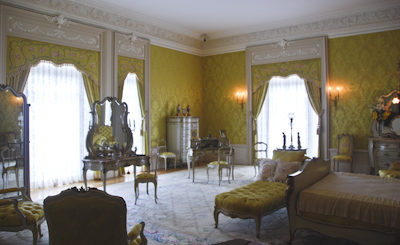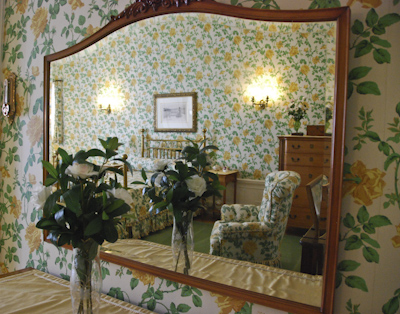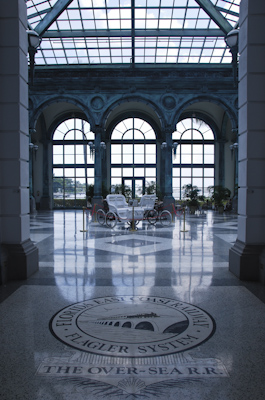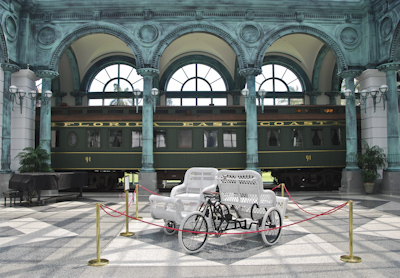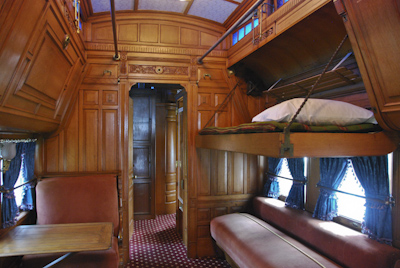Tuesday, April 12, 2011
We arrived in Delray Beach, Florida on April 9th and stayed in the area for about two weeks. It was fun visiting with my brother and sister-in-law and mother. There are many interesting things to do in South Florida, not including the beach and numerous pools. During our entire stay, the temperatures were in the mid 80s and it was bright and sunny every day. At home in New York, it was still cool and raining.
Palm Beach is a couple of towns north of Delray and we bumped into Henry Morrison Flagler again. While he was developing St. Augustine, and expanding his railroad, and opening the state of Florida, Flagler also built his winter mansion in Palm Beach and also built another hotel across the road calling it “The Breakers”.
Flagler’s house is now a museum, and after seeing Flagler’s influence in St. Augustine, we had to visit it. We easily found the house because The Breakers is visible for miles around Palm Beach. We parked in one of the parking lots and walked up the path lined with royal palm trees, to the front of the mansion.
 Left Side of the Entrance Foyer
Left Side of the Entrance Foyer
After we paid the rather expensive admission fee, we opted for the self-guided tour and happily discovered that photography was allowed without flash. That means that I took lots of unnecessary pictures, and have many visual keepsakes. Of course, the house is huge and parts of the interior reminded me of European castles. Other parts of the house look like an old Victorian hotel.
On the first floor, there was a billiards room with two pool tables and a large music room complete with a pipe organ. The center courtyard provided light and cool breezes to the rooms during a time which preceded air conditioning in the hot climate.
There was a maze of over-sized rooms on the first floor which were designed for entertainment. The house was “homey” in an overstated gilded sort of way.
We took our time walking through the rooms. It wasn’t crowded and there weren’t many visitors. We walked up the wide marble stairs to the second floor. There were many smallish bedrooms which were attributed to people who had, I imagine, donated money to restore and furnish the room.
All the bedrooms were tastefully decorated in a variety of styles and colors and fabrics. There were also several turn of the century bathrooms complete with 100 year old state-of-the-art plumbing.
The colorfully decorated bedrooms contrasted with the monochromatic servants’ rooms which were also available to view. Beyond the servants’ rooms were several rooms for exhibit space. There was an interesting display of the drawings and furniture designed by the artist, Joseph Urban. He was an illustrator, theater set designer, and architect who lived from 1872 – 1933. Urban designed productions for Ziegfeld Follies and the Metropolitan Opera in NYC.
Back outside in the brilliant sunshine, we walked across a small courtyard to what would have been Henry Flagler’s carriage house. Light streamed in through gigantic windows and soft classical music was playing. On one side, tables were set for light lunch or high tea. On the other side of the space was the Flagler’s private railroad car.
The green railroad car was built in 1886 by the Jackson & Sharp Company for Henry Flagler. It was acquired by the museum in 1959 and restored. After seeing the rail cars of the Root family in Daytona Beach, it was fun to be able to go inside this car.
The interior wood was amazing! Beautiful hand-crafted wooden walls and built-in cabinetry were in every part of the car. Special imported wood had been used and was restored to like-new condition. You could just imagine the degree of wealth during the Gilded Age.
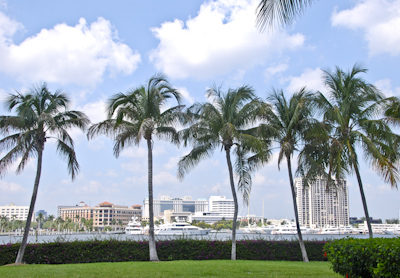 Palm Beach From The Flagler Museum
Palm Beach From The Flagler Museum
We stopped at the gift shop before walking back out into the beautiful Florida sunshine. We learned more about Henry Flagler than we knew in St. Augustine. He must have been an amazing person.
